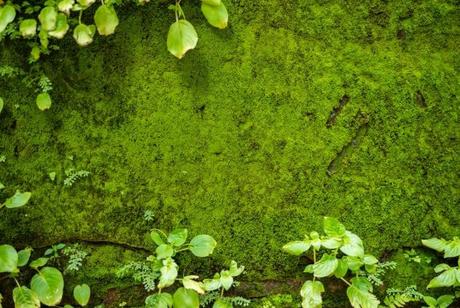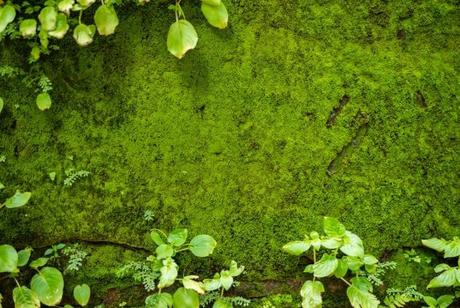How To Grow Moss Indoors?
Did you know that moss is not really a single plant? It’s a cluster of several plants or colonies that grow together! As soon as you think of forests and anything green, you probably have “moss” pop up in your mind. And, rightly so! They are simple yet gorgeous.
Like green carpets, moss spreads everywhere and is pretty easy to maintain. Every plant is super tiny, but the overall effect is stunning, to say the least. Moss doesn’t produce flowers or seeds. So, how do they reproduce, you ask? They produce spores and spread without inhibition, making every gardener smile with joy.

Moss spreads in locations that boast of enough moisture. But, is it possible to grow them indoors? You bet! In fact, it’s easy! You don’t even need to use fancy fertilizers to grow moss. All you need is a bunch of moss plants and you’re good to go! As always, you can grow anything indoors as long as you mimic the conditions outdoors. This means that you’ll need to build an environment that’s simply perfect for moss.
Note that although growing moss is easy, you will need specific tools to grow as much as you want. It depends on what you want to do with it. For instance, some gardeners create terrariums where moss provides a stunning visual. Others simply let the moss spread without any particular goal in mind. Regardless of what you want to do, here’s how you can grow moss indoors.
Step by Step Process of How to Grow Moss Indoors
Remember I said there are a few conditions to grow moss? Well, here they are:
Dampness – Moss thrives when the conditions around are damp. However, you cannot overwater your plants. A gentle mist every day is more than enough. No fertilizers are required. You can place them in shade with indirect sunlight for great results. Do not place under direct sunlight or the plants will begin struggling.
Soil – Moss loves slightly acidic soil. As long as the pH ranges from 5 to 6, you’ll be able to take care of your plants.
Humidity – Moss has the ability to absorb nutrients from the atmosphere. Thus, they grow well in humid climates. You can place a dome over the plant in the beginning to create an effect. This is why people use glass domes so that the plant can grow happily indoors. Spraying water often will create a warm and humid environment.
Check the variety – Since you’re going to be growing indoors, you might want to choose among varieties that are perfect to grow without direct sunlight. Basically, there are three types you can grow easily. We will talk about the most common ones.
Hepaticae – People usually grow moss because they look extremely soft to the touch. If you want soft ones, you could choose the Hepaticae variety. Also known as liverworts, they adjust well in shaded areas and don’t require a lot of direct sunlight. However, they need a humid environment, so keep that in mind if you grow them. If you want something that resembles a green carpet, this is the variety you must choose.
Musci – If you’ve ever used sphagnum moss, you probably know Musci already. Hypnaceae and Sphagnum moss are some of the most commonly grown mosses all over the world. Some people prefer to grow sphagnum and dry it so they can use it as a soil amendment. Commonly known as peat moss, they have the ability to retain water and improve soil drainage. From orchids to vegetables, you could grow anything you want with dry moss.
However, many gardeners grow Musci varieties because they look good. Unlike other types of moss that spread on the ground with indistinguishable structures, you can clearly identify the stems and leaves of sphagnum moss. This makes them excellent for many DIY projects even when they are dry.
Anthocerotae – Commonly known as hornworts, this species displays pointy branches that are utterly beautiful. It’s very popular as an aquatic plant. They are fast to grow, look pretty and fluffy, and also absorb excess nutrients that remain in the water! Like other types of moss, they also love humid environments. They grow well in shaded areas, but they can also grow in locations that receive a few hours of sun.
Now that we got that out of the way, let’s move on to the supplies you will need:
- Moss (You can purchase sheets online or collect them yourself when you head outside)
- Container of your choice to hold the moss.
- Water
- Pebbles or stones to decorate
- Potting soil
- Charcoal or sand
- Transparent dome
Once you have everything necessary, grab your container. You can use clear plastic or glass or simply buy a terrarium. Start decorating the base at first. Whether you’re using pebbles meant for aquariums, seashells or simple stones, place them at the base.
Next, spread a layer of sand or charcoal on top of the pebbles. Although it isn’t necessary, it creates a nice visual. Spread some potting mix over the sand or charcoal to provide a base for the moss to grow on. Remember that you want to create something that resembles a forest, so go ahead and place anything you think will do the job. Bark, dry sticks, or stones – be creative!
Next, place your moss sheets on the potting soil. Press the sheets on to the mix so they start growing as soon as possible. You can also place them on the stones and they will grab anything they get as long as it’s moist. If the environment is humid, they will begin growing very quickly.
Spray lots of water and cover the container with a dome that allows bright light. You can now place them in any location you like indoors. A little light will help moss grow faster. Spray water every 2-3 days depending on how dry the dome appears.
Within no time, you’ll have your moss garden ready!
Now, imagine you don’t have a glass or plastic container to place the moss. Or, you probably want the moss to spread on rocks and stones. What do you do then? Well, it’s not that difficult. Collect your moss sheets like before and mix them with some yogurt. The mixture has to be good enough to spread. The microbes in yogurt will help the moss spread even on rocks.
Choose your rocks and smear them with the yogurt mixture. You can chop the moss to do this efficiently. Don’t worry, it will grow even if you tear it apart. Spray water whenever you see that the rocks are too try. You’ll have your moss spreading everywhere within just a couple of months.
Can Moss Grow in Direct Sunlight?
Yes. There are too many varieties of moss. While most of them prefer indirect sunlight, varieties like Entodon, Irish, Scoth, Juniper, Spoon Leaves Moss, and many more will thrive in direct sunlight. Sometimes, moss even grows under the grass! You may have some moss growing in your garden, and it’s possible that you haven’t just noticed it!
How Do You Keep Moss Alive Indoors?
As mentioned already, you don’t need to do anything much apart from maintaining your moss garden. If you mist them regularly, maintain moisture and humidity and leave them undisturbed for a few weeks, you’ll have a fledgling moss garden in no time. Make sure you place the dome back on after misting with water because it keeps the humidity in check.
Also, select a good location to place your moss container. A windowsill with a few hours of light will do the job well. You can also use artificial light if it’s completely dark. Another method that works is to place the container under direct sunlight every morning for 2 hours. You can take the container back indoors after it becomes a little warm.
How Long Does It Take For Moss To Grow?
Moss grows pretty quickly if you’ve done everything right. It usually takes a month or two for it to start spreading after you’ve planted them.
How Long Can Moss Live For, When Indoors?
Moss has the ability to spread a lot. Like every other plant, you can expect them to die back; however, the new growth is so fast that you will not even notice dead plants. They can live for a long time, even for years, if you take care of them diligently. The most important requirements are humidity and water. If you adhere to these two, your moss will live on for a long, long time.
Does Moss Need a Lot of Water?
As mentioned already, water apart from humidity is one of the most important requirements to grow moss. Moss plants need water to survive. Remember that they are vascular, which means that they lack a circulatory system like other plants. Thus, they lack the ability to transport water in their systems and depend on the water they receive from the environment around them.
Moreover, their reproductive process also comes to a halt when you forget to provide water. This is because the males survive when they can swim easily in water. So, if there’s no water, the reproduction stops and hinders the plants from growing further.
However, this doesn’t mean that you overwater your moss plants. Like all other plants, moss can also die with too much water because an excess of anything is usually detrimental. Moss prefers damp environments. The keyword here is damp, or moist. If you overwater so much that your plants are submerged in puddles, it’s an indicator that they may die soon. Moss growing in terrariums will die quicker because it’s difficult for the water to evaporate.
It’s important to make sure that the soil is consistently damp. If you’re growing moss on rocks or pebbles, mist water every day to keep the surrounding damp. Sometimes, you may notice that your moss is turning brown instead of displaying that vivid green you’ve come to love. In such situations, hold back on the water. It’s also possible for them to turn dark brown if the water you’re using contains more chlorine than usual.
Does Moss Ever Require Pruning?
If you notice that some parts of your moss plants are struggling to grow or turning brown while the remaining parts are thriving, it’s time to prune out the dead bits. This will encourage fresh growth and it will quickly fill out.
How Can I Prevent Mold Growth?
When you overwater your moss plants, you will see mold spreading ever so slowly. If you see white mold, you can wipe it away and wait for excess water to evaporate. Generally, the plants will recover and continue to grow as usual. However, if the mold is spreading too much or is black, it’s time to remove infected parts. You can either wait for it to fill out on its own or replace dead moss with fresh sheets.


